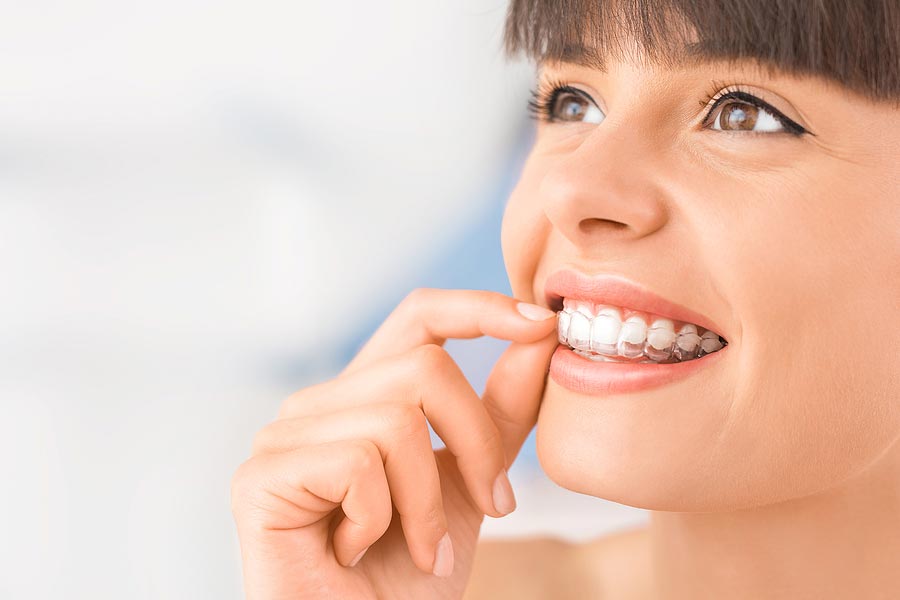Orthodontics
What is Orthodontics?
Orthodontics is a branch of dentistry that treats malocclusions or ‘bad bites’. A bad bite occurs when the lips and/or jaws don’t line up the way they should, resulting in crooked teeth, a bite that doesn’t work properly, and jaws that look unbalanced.
An orthodontist fixes a bad bite using braces and ‘appliances’. This correction of the teeth and their supportive structures makes for a healthy, attractive smile.
What Causes Orthodontic Problems?
The majority of bad bites are inherited. Genetic problems include protrusion, crowding, spacing, extra or missing teeth, and jaw growth problems. Other bite problems develop over time due to thumb sucking, loss of primary or permanent teeth, an accident, etc.
Why Treatment Is So Important
When your teeth are crooked and crowded they are difficult to clean which can lead to tooth decay, tooth loss, and gum disease. A bad bite also leads to uneven wear of tooth surfaces, difficulty chewing and speaking, added stress on supporting bone and gum tissue, and jaw joint problems.
On the emotional side, an unattractive smile can reduce confidence and self-esteem. Left untreated a child or adult may go thru life with a hand covering their mouth or never smiling.
If left untreated a bad bite may lead to more costly dental treatments in later years.
When should children get an orthodontic check-up?
The American Association of Orthodontists recommends children visit their orthodontist by age seven. At this age, orthodontists can recognize issues that are easier to correct when found early.
Can adults benefit from orthodontic treatment?
Braces work at almost any age. Roughly one in five orthodontic patients is over age eighteen. The treatment has become more appealing to adults because of solutions that are less visible and more comfortable.
Are There Choices for the Braces?
Patients should have choices in the appliances that will be used to straighten their teeth:
Metal Braces: These are the most durable braces suited for patients that want to show off their braces and/or the popular colored elastic ties.
Invisalign: This clear plastic appliance is invisible and replaced every two weeks. This solution is suited to patients not interested in wearing traditional braces but may not be suitable for complex orthodontic problems.
Ceramic Braces: These are clear braces designed for patients wanting an esthetic solution and excellent treatment quality.
What is my role in treatment?
Orthodontic treatment combined effort of dentist and patient. The patient needs to follow the orthodontist’s instructions, attend all orthodontic appointments, and maintain an excellent oral hygiene regimen – this includes brushing at home and keeping regular checkups with your general dentist.
How Long Does Treatment Take?
Orthodontic treatment generally takes one to three years plus retention – the retention phase of treatment involves the use of retainers and starts after braces are removed.
How much does treatment cost?
The cost of orthodontic treatment depends on the extent of the bad bite and the length of treatment. Your orthodontist will discuss the cost of treatment and financing options before treatment begins. Braces are far more affordable today than ever.
Porcelain Veneers
A veneer can change the color, shape, and size of a single tooth or a complete smile. They are used to whiten teeth, remove gaps, straighten teeth, and correct teeth worn by grinding. Veneers look, feel, and function as natural teeth do.
Veneers are thin porcelain caps that bond to the outside of the tooth. The application takes just 2 visits and requires minimal removal of tooth structure. Veneers are the most natural-looking and durable cosmetic restoration in dental history. They are also the most compatible material to sit next to the gums. They are the best solution for correcting issues with the front teeth.
What to Expect
Porcelain Veneers will survive a lifetime, with the proper care. They are stronger and resist stains and chipping better than bonded fillings. Maintaining an at-home oral hygiene regimen, and making regular hygiene visits will ensure many years of service for your veneers. Veneers can be damaged by nail-biting or biting into candy or ice.


